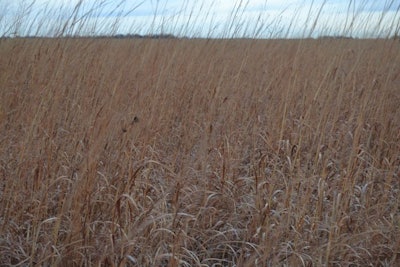
As contracts for the U.S. Department of Agriculture (USDA) Conservation Reserve Program (CRP) are up for renewal, landowners are discovering that the payments offered to them for preventing soil erosion are not as high as they once were.
In the CRP program, which began in 1985, farmers are compensated for taking land out of crop production and returning them to native grasses as a means of soil conservation.
It’s been a popular program for farmers and landowners because it offers a steady source of income on fields that may not be optimal for crop production. It’s popular with the environmentalists because of its ecological benefits. It’s also popular with the pheasants and quail, which makes it popular with the hunters.
But it isn’t quite as popular with the farmers as it once was because of declining payments, which are decided upon by a survey from the USDA National Agriculture Statistics Service. For example, the rates of pay in Beaver County, Oklahoma, have gone from $40 to $18 per acre, according to a Harvest Public Media report.
With contracts up for renewal, decisions will need to be made. Some of our family ground is up for renewal, as is a field owned by a local entity of which I serve on the board.
In both instances, I’ve been thinking about what is best for both pieces of land. I’ve never farmed the latter, but I have farmed the former. There are parts of that field that are really sandy and places that retain moisture way longer than you would expect. Let’s just say one of the reasons I was successful as a track and cross country runner a teenager is because of frequent runs back to the house to get someone to pull me out after getting the tractor stuck.
Even though few things in life are as relaxing and enjoyable as making the rounds on a tractor, it was kind of a relief when my dad enrolled that field in the CRP program.
Will feed grain supplies increase?
Without getting into the fate of those two pieces of ground I earlier mentioned, it’s safe to assume that others put in a position to make a decision will opt to put some acreage back into row crops as it has the potential to be more profitable.
Depending on how many farmers decide to opt out of CRP and what they decide to do with the ground, the nation’s supply of feed ingredients such as corn and soybeans could go up, and therefore the prices of those commodities could go down.
Those buyers will no doubt be closely looking at the planting intentions reports and supplies as they make decisions for themselves.


















